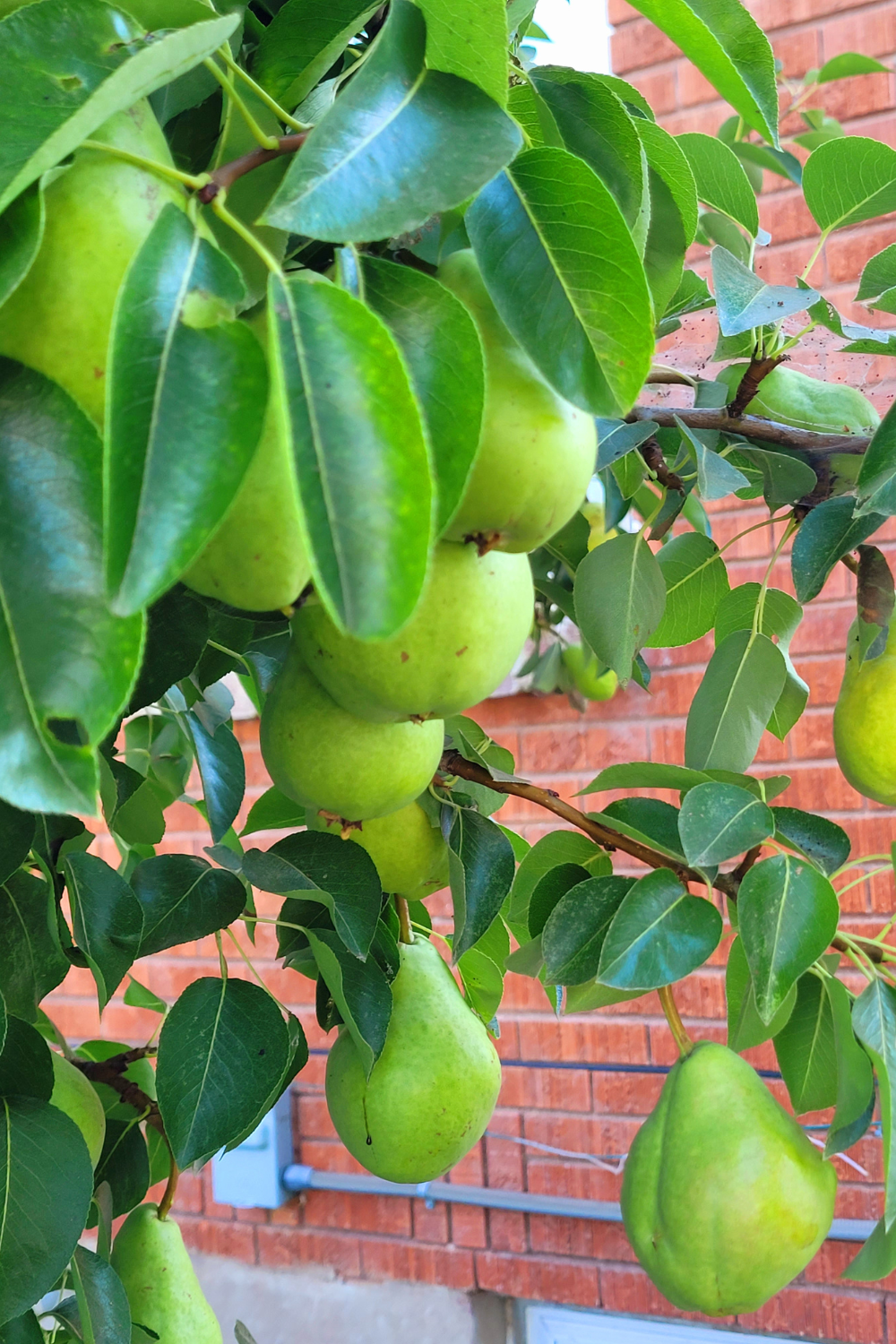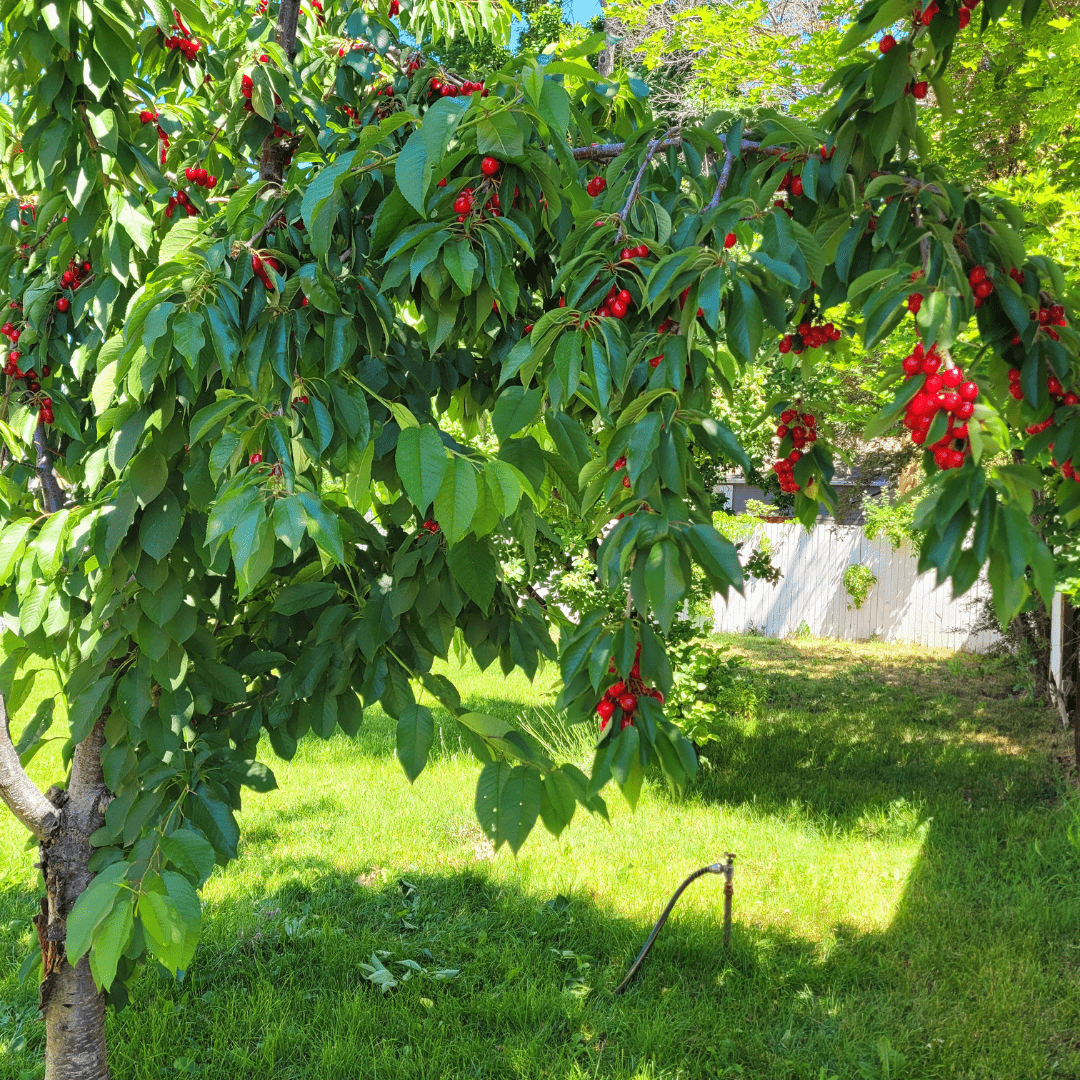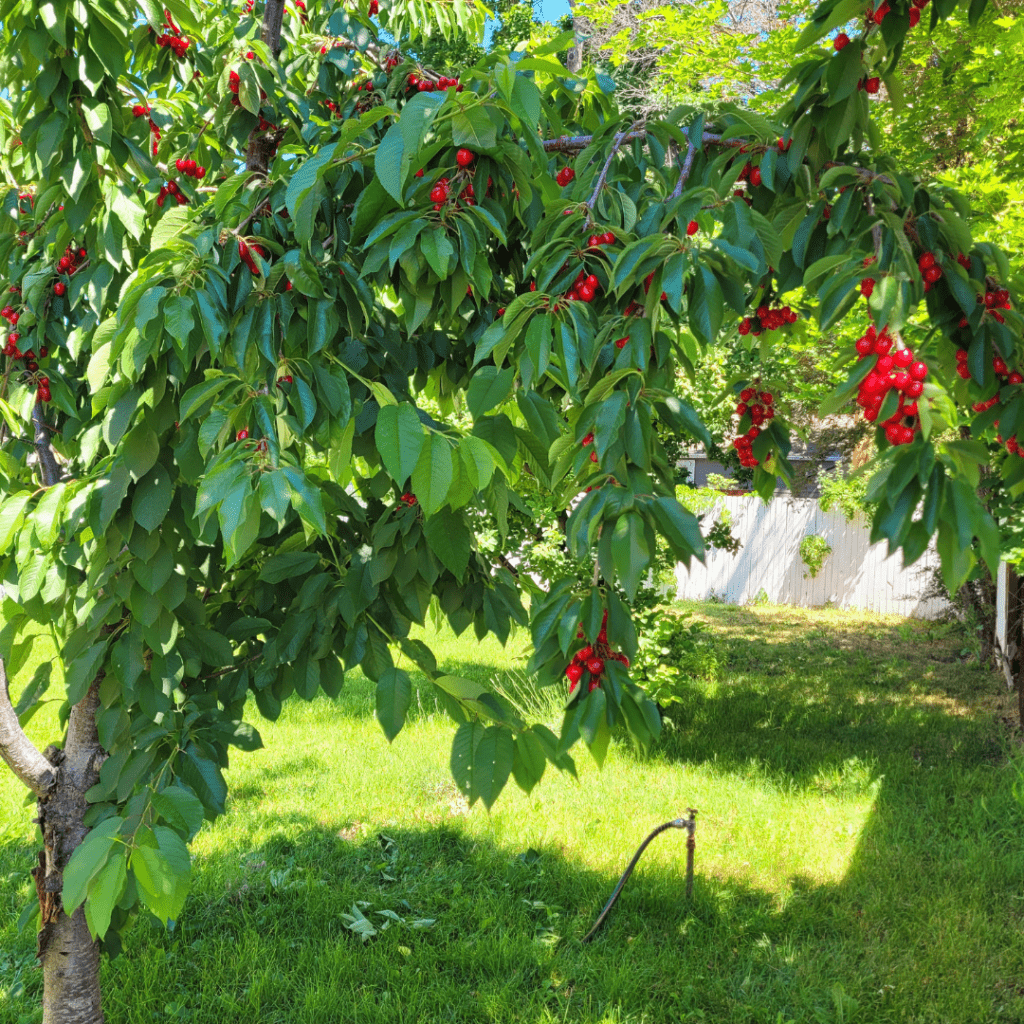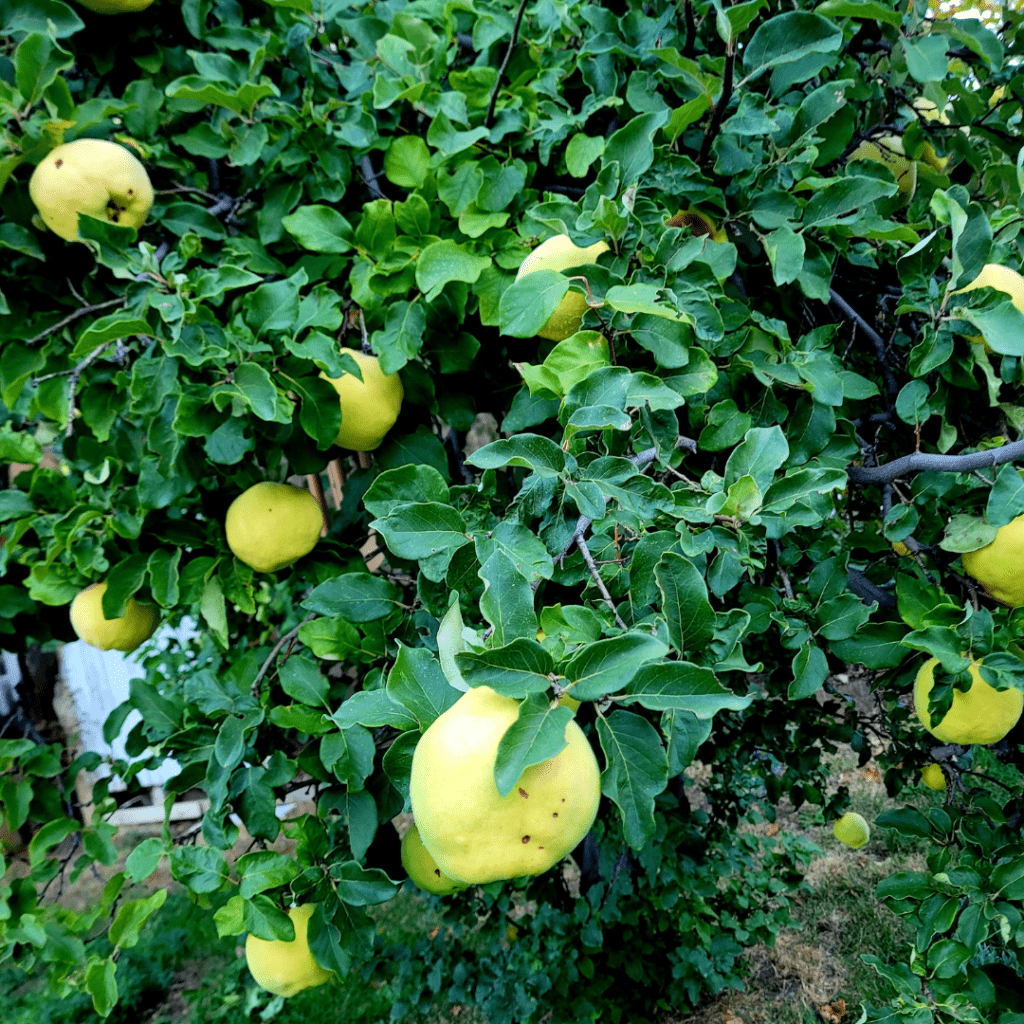Learn how to create a sustainable backyard orchard with my practical tips for planting, maintaining, and harvesting fruit trees. Grow healthy, productive trees naturally while supporting the environment.
I’ve always dreamed of stepping outside and picking fresh fruit straight from my own backyard — and over the years, I’ve learned that creating a sustainable orchard is entirely possible with a little planning and care. In this post, I’ll walk you through the steps I use to grow healthy, productive fruit trees naturally, from selecting the right varieties to planting, pruning, and maintaining them for years of delicious harvests. Whether you have a small yard or a spacious property, these tips will help you build a thriving orchard that’s good for both your family and the environment.
This is a pinnable post. Tap or hover over any image in this post to pin to your Pinterest Boards.

Introduction to Sustainable Backyard Orchards
Understanding the Benefits of a Sustainable Backyard Orchard
Growing your own backyard orchard is not only a deliciously fruitful endeavor, but it also comes with a bunch of benefits. First of all, you’ll have a constant supply of fresh and juicy fruits right at your doorstep for free! No more rushing to the grocery store only to find sad, overripe produce. Secondly, you’ll reduce your carbon footprint by cutting down on transportation and packaging. Plus, there’s something incredibly satisfying about being self-sufficient and knowing exactly where your food comes from. It’s like being your own personal farmer, without all the hay and overalls.
Factors to Consider Before Starting Your Orchard
Now, before you start planning your orchard, you need to consider a few important factors. Firstly, make sure you have enough space. Fruit trees can grow quite large, so you don’t want to plant them too close together. Secondly, think about the amount of sunlight your orchard will receive. Most fruit trees thrive in full sun, so choose a location that gets at least six hours of direct sunlight per day. And finally, be realistic about your time commitment. Orchards require regular care and maintenance, so make sure you have the time and energy to give them the love they deserve.
Selecting the Ideal Fruit Trees for Your Orchard
Choosing Fruit Trees Suitable for Your Climate and Soil
When it comes to selecting fruit trees for your orchard, it’s important to choose varieties that are well-suited to your climate and soil conditions. Different fruit trees thrive in different environments, so do some research to find out which ones are most likely to succeed in your area. You don’t want to be the person trying to grow apples in the desert or oranges in the Arctic. That’s just a recipe for disappointment and a waste of perfectly good soil.
Considering Pollination and Space Requirements
Another important consideration is pollination. Some fruit trees are self-pollinating, which means they can produce fruit on their own. However, most fruit trees require cross-pollination, which means you’ll need to plant more than one variety to ensure a bountiful harvest. Additionally, be mindful of the space requirements for each tree. Different varieties have different sizes and shapes, so plan accordingly to avoid overcrowding and potential tree feuds.
Preparing the Soil for Optimal Orchard Growth
Testing and Analyzing Soil Composition
Now that you’ve chosen the perfect fruit trees for your orchard, it’s time to give them the best possible start by preparing the soil. Start by testing and analyzing the soil composition. This will help you understand its nutrient levels and pH balance, which are crucial for healthy tree growth. You can get a soil testing kit from your local garden center or send a sample to a specialized lab. Trust me, soil analysis isn’t as boring as it sounds. It’s like CSI for dirt.
Here are 4 easy DIY garden soil tests you can perform yourself!
4 Easy DIY Garden Soil Tests to Do Now
Amending Soil and Providing Proper Drainage
Once you know your soil’s strengths and weaknesses, it’s time to amend it accordingly. Add organic matter such as compost or well-rotted manure to improve soil structure and fertility. This will give your fruit trees a nutrient-rich environment to thrive in. Also, make sure your soil has proper drainage. Fruit trees don’t appreciate wet feet, so if your soil tends to get soggy, consider raised beds or installing drainage systems. Just remember, nobody likes a wet blanket, not even fruit trees!
Learn more about soil building with my other helpful posts!
- How to Fix Sandy Garden Soil with These Effective Organic Amendments
- How to Install a Worm Tunnel and Improve Your Garden Soil
- How to Start a Worm Bin: Turning Kitchen Scraps into Black Gold!
- How to Start Composting for the Garden: A Step-by-Step Guide
- The Ultimate Guide to Composting in Your Suburban Backyard

Implementing Natural Pest and Disease Management Strategies
Identifying Common Orchard Pests and Diseases
Now, let’s talk about the not-so-fun part of orchard growing: pests and diseases. Like any other plants, fruit trees are susceptible to a range of creepy crawlies and nasty diseases. But fear not, because knowledge is power. Take the time to learn about the common pests and diseases that can afflict your fruit trees. This way, you can spot the warning signs early and take action before things get out of control. Remember, it’s better to be Sherlock Holmes than Dr. Doomsday when it comes to your orchard.
Using Beneficial Insects and Natural Remedies
When it comes to managing pests and diseases in your orchard, it’s always best to take a sustainable and nature-friendly approach. Encourage beneficial insects like ladybugs and lacewings, who love to feast on orchard pests. You can also use natural remedies like neem oil or garlic spray to keep the bad bugs at bay.
Tackle garden snail pests with these helpful strategies!
The Best Garden Snail Control Strategies
Watering and Irrigation Techniques for a Sustainable Orchard
Watering your backyard orchard is crucial to ensure the health and productivity of your fruit trees. But just like Goldilocks, you want to get it just right – not too much, not too little. Understanding the water needs of your fruit trees is key to maintaining a sustainable orchard.
Understanding the Water Needs of Fruit Trees
Fruit trees are like divas when it comes to water – they want just the right amount. Too little water, and they’ll throw a tantrum by producing small, shriveled fruits. Too much water, and they’ll drown in their sorrows, leading to root rot and other problems.
To figure out how much water your trees need, consider factors such as weather conditions, soil type, tree size, and age. Generally, fruit trees need about 1 inch of water per week. However, during hot, dry spells, they may need more frequent watering.
Implementing Efficient Irrigation Systems
To keep your orchard sustainable and your water bills down, implementing efficient irrigation systems is a wise move. Ditch the old-school hand watering and consider options like drip irrigation or soaker hoses.
Drip irrigation delivers water directly to the tree’s roots, reducing evaporation and water waste. Soaker hoses, on the other hand, release water slowly along the entire length of the hose, allowing it to seep into the soil for deep root hydration.
Remember, consistency is key. Watering deeply and infrequently encourages the roots to grow deeper, making your trees more resilient to drought conditions. So, say goodbye to daily sprinkler sessions and hello to smarter watering methods!
Pruning and Training Fruit Trees for Maximum Yield and Health
Now, pruning your fruit trees may sound like a daunting task, but think of it as giving your trees a stylish haircut – they’ll love you for it! Pruning not only helps them look good, but it also ensures maximum yield and overall tree health.
The Importance of Pruning for Fruit Trees
Pruning helps fruit trees in numerous ways. It removes dead or diseased branches, improving air circulation and reducing the risk of pests and diseases. Pruning also allows sunlight to reach all parts of the tree, promoting even fruiting and preventing the dreaded “fruit only on the top” situation.
Additionally, pruning can help shape the tree and control its size, which is especially important for backyard orchards with limited space.
Pruning Techniques for Different Fruit Tree Types
Each type of fruit tree has its own unique pruning needs, so knowing the basics is essential. For example, stone fruits (like peaches and cherries) prefer light pruning during the dormant season, while pome fruits (such as apples and pears) respond well to pruning in late winter or early spring.
Remember to remove any crossed branches, inward-growing branches, or those growing towards the center of the tree. Aim for an open canopy that allows sunlight and air to reach all parts of the tree. Don’t be afraid to give your trees a little trim – they’ll thank you with bountiful harvests!
Harvesting and Preserving the Fruits of Your Orchard

Congratulations, you’ve reached the sweetest part! Harvesting the fruits of your labor is a joyous occasion, but knowing when and how to do it is crucial to enjoy the juiciest, ripest fruits straight from your backyard orchard!
Knowing When and How to Harvest Different Fruits
Different fruits have different signs of ripeness, so don’t go picking everything willy-nilly. Apples, for instance, are ready when they easily detach from the tree with a gentle twist. On the other hand, citrus fruits should be left to ripen on the tree until they reach their full color.
When harvesting, handle your fruits with care, as they can bruise easily. Use a sharp pair of shears or pruners to neatly remove fruits from the branches. And if you can resist the temptation, let certain fruits, like peaches and plums, ripen for a day or two on your kitchen counter for an extra burst of flavor.
Methods for Preserving and Storing Orchard Fruits
With a bountiful harvest, you may find yourself with more fruits than you can eat in one go. Fear not, preserving and storing techniques are here to save the day!
Canning, freezing, and drying are great ways to preserve your fruits for later enjoyment. Make some homemade jams or jellies, freeze berries for smoothies, or dry slices of apples for healthy snacks. Just be sure to follow proper techniques and use appropriate containers to keep your fruits fresh and delicious.
Here are some canning projects from my very own backyard orchard!
- The Ultimate Guide to Canning Apple Pear Butter: Step-by-Step Instructions
- Canning Pear Sauce: An Easy Step-by-Step Guide
- Canning Whole Cherries: Easy Water Bath Tutorial
- How to Make and Can Strawberry Shortcake Jam
- How to Can a Year’s Supply of Quince Jam
Maintaining the Long-Term Sustainability of Your Backyard Orchard
Now that your backyard orchard is thriving, it’s time to ensure its long-term sustainability. Regular inspection and maintenance practices will keep your trees healthy and productive for years to come.
Regular Inspection and Maintenance Practices
Regularly inspect your fruit trees for signs of pests, diseases, or nutritional deficiencies. Look out for blemished leaves, discolored fruits, or any unusual growth patterns. Addressing these issues promptly can prevent them from spreading and wreaking havoc on your orchard.
Additionally, check for any broken branches, weak limbs, or overgrown suckers. Prune them promptly to prevent further damage or potential hazards. And don’t forget to remove any fallen fruits or debris, as they can attract pests or harbor diseases.
Renewal and Rejuvenation Techniques for Aging Trees
Just like us, trees age and may need a little help to stay in top shape. For aging fruit trees, consider renewal pruning, which involves removing old and unproductive wood to encourage new growth. This revitalizes the tree, enhances its fruiting potential, and can extend its productive life.
Renewal pruning is like a spa day for your trees, giving them a fresh start and a new lease on life. So don’t be afraid to give your old trees some TLC – they may surprise you with a second act of fruitful glory!
Conclusion
By implementing sustainable practices in your backyard orchard, you can create a thriving ecosystem that provides an abundance of delicious fruits year after year. From selecting the right fruit trees for your climate to maintaining proper soil health, watering, and pest management, a sustainable orchard not only benefits you but also supports the health of the environment. So, start planning and nurturing your backyard orchard today, and enjoy the bountiful harvests while knowing that you are contributing to a healthier and more sustainable future.

Frequently Asked Questions
1. How much space do I need for a backyard orchard?
The space required for a backyard orchard depends on the number and type of fruit trees you want to plant. Generally, fruit trees need adequate space for their roots to spread and for proper sunlight exposure. Dwarf or semi-dwarf varieties can be grown in smaller spaces and even in containers, while standard-sized trees require more room. As a general guideline, aim for at least 8-10 feet of space between each tree.
2. How do I protect my orchard from pests without using harmful chemicals?
Implementing natural pest management strategies is key to maintaining a sustainable backyard orchard. Encouraging beneficial insects like ladybugs and lacewings, using physical barriers like nets or fences, and practicing proper sanitation to remove fallen fruits and debris can help deter pests. Additionally, companion planting, such as planting flowers or herbs that repel pests, can be beneficial.
3. How often should I water my fruit trees?
The frequency of watering your fruit trees depends on various factors, including the type of tree, soil type, and climate. As a general rule, it’s important to provide deep, infrequent waterings rather than shallow and frequent ones. This encourages the tree’s roots to grow deeper and makes them more resilient. Monitor the moisture levels in the soil and aim to water deeply once a week, adjusting based on the specific needs of your trees.
Summary
I hope I have inspired you to plant your garden with these tips and products.
If you were encouraged by this post, I invite you to check out my FREE Printables Page for fun free printables, planners, and charts.
ENTER MY FREE Printables Page HERE
Here are some more of my gardening inspiration posts to check out!
How to Grow Your Own Food Without a Backyard!
My Best Spring Garden Posts in One Spot!
Spring Garden Soil Prep: How to Improve Your Soil
Seed Starting Mix 101: Everything You Need to Know!
How to Plan a 200 Sq. Ft. Vegetable Garden Layout
How I Easily Start My Seeds Without Expensive Grow Lights!
How to Create a Smart Garden: Tech Meets Nature!
The Best Cheap Raised Vegetable Garden Beds
How to Grow Artichokes: Plant Once and Harvest for 5 Years!
The Best 8 Fast-Growing Vegetables In Just 45 Days!
From Snow to Sow: Plan Your Spring Garden Now!
11 Fun Ways to Brighten Your Spring Garden with Personality
Top 10 Spring Garden Crops to Harvest in 30 Days and Eat Now!
The Best Survival Crops for Caloric Survival
My Victory Garden: What I Learned from 5+ Years
Why Every Family Should Have a Victory Garden in Their Backyard Now!
The Best Perennials for a Long-Term Survival Garden
The Best Essential Oils for Plants That Repel Garden Bugs
More Gardening Projects!
How to Grow Green Garden Peas: Perfect Plump Peas!
Hugelkultur: Does This Epic Pioneering Method Actually Work?
9 Ways to Celebrate Earthing Day in Your Garden!
Gardening Indoors: Secrets of Growing Your Food Inside!
How to DIY a Milk Jug Drip Irrigation System!
Why Cedar Mulch Is The Perfect Natural Weed Barrier
Gardening Projects
Onions: How to Grow Onions for Storage
Peas: How to Grow Garden Peas for a Bumper Crop
Carrots: How to Grow Carrots for a Bountiful Harvest
Prep Your Garden for Spring Planting with These Expert Tips!
How to Grow a Prepper Garden to Survive and Thrive
The Best Garden Tools You Need for a Productive Season
Fastest Growing Vegetables for Your Survival Garden
How to Grow Marigolds As Pest Control In Your Vegetable Garden
Must-Have Tools for a Successful Balcony Vegetable Garden
How to Effectively Combat Powdery Mildew in Your Garden
The Best Tips for Organic Gardening
How to Release Ladybugs In Your Garden for Organic Pest Control
The Best Garden Snail Control Strategies
The Best Spring Vegetables to Grow in Your Garden
Seed Starter Mix: How To Make Your Organic Seed Starter Mix At Home
How to Grow a Productive Canning Garden
How to Plant and Grow a Salsa Garden
Easiest Heirloom Vegetable Seeds to Grow Now
How to Use the Hand Twist Claw Tiller: Tackling Tough Soil
More Fun Gardening Posts to Check Out!
Planning Your Garden: How to Plan a Vegetable Garden: Expert Green Thumb Tips!
Winterizing the Garden: How to Winterize Your Vegetable Garden: Step-by-Step Checklist
Mulching the Garden: How to Make Leaf Litter Mulch
Grow a Pumpkin Patch: How to Grow a Pumpkin Patch in Your Backyard
How to Grow a Fall Garden: 9 Best Fall Crops
Clever Ways to Incorporate Indoor Composting into Your Home
How to Start Composting for the Garden: A Step-by-Step Guide
The Ultimate Guide to Composting in Your Suburban Backyard
Why I Built A Survival Garden in My Backyard
16 Best Medicinal Herbs to Grow in Your Garden Now
Blessings,
The Off Grid Barefoot Girl





